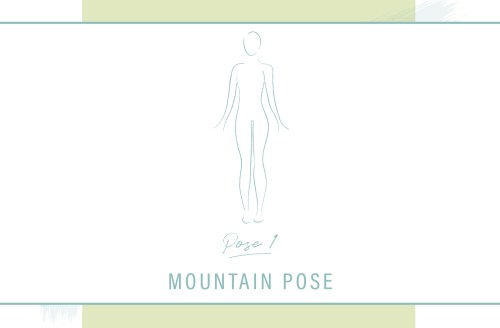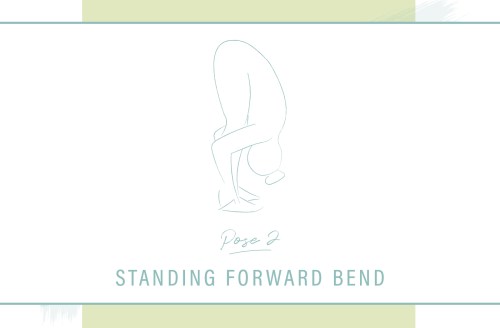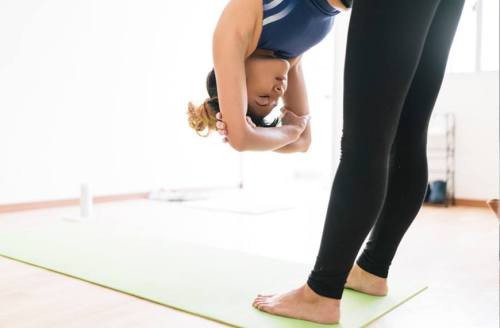Like your zodiac sign and Myers-Briggs personality type, your Ayurvedic constitution (AKA dosha) can tell a lot about your physical and emotional state, as well as your behavior. (All of these are, of course, just tools for self-improvement not absolute truths. But they’re a fun way to explore how you understand yourself and the world around you.) If you’re not sure whether you’re a kapha, pitta, or vata, here’s a handy quiz you can take. And while each of us embodies elements of all three, there’s one predominant dosha for everyone. Learning how to pacify it, i.e. bring it into balance through diet and exercise, will help you express yourself in the healthiest way.
Here, in a three-part series for Well+Good, Kim Rossi, a certified yoga teacher and Ayurvedic practitioner who works as the director of the Shankara Ayurveda Spa at The Art of Living Retreat Center in North Carolina, shares a selection of asanas best suited for each constitution in order to address its most-common needs such as speeding up digestion (kapha), boosting mood (pitta), and reducing anxiety (vatta).
Thanks to their elemental energy—wind—vata doshas tend to be go-go-go types. And while at their best, that means they can be counted on to get things done, it also means of all three doshas, they’re the ones most prone to feeling overwhelmed and anxious. “To pacify vata dosha, it’s suggested to slow down and breathe deep in our yoga postures,” says Rossi. “Avoid moving very quickly from one posture to the next.”
Aside from learning to slow their role, Rossi says vatas can also benefit from learning to go with the flow. “Our bodies are made of 70-percent water,” she says. “It’s suggested [in Ayurveda] to drink a half cup per hour in winter and one cup per hour in summer of warm water, throughout the day. Think of a river, if it’s swiftly moving it’s clean, no debris accumulates. Same with our bodies. Drink half of your body’s weight in ounces per day.”
Keep reading for Rossi’s recommendations on 5 yoga postures to practice in order to balance your vata dosha.

1. Tadasana AKA mountain pose
This is a great posture for grounding. Stand with feet hip-width apart. Spread the feet and place the weight evenly through entire foot from front to back and side to side. Engage the muscles in the thigh to hug the bones. Inhale arms overhead. Reach up into the fingertips, and top of your head, while pressing down into your feet. Close your eyes and take long, slow, deep breaths in and out of your nose. No strain, no struggle. Breathe, relax, feel, observe, and allow. Hold for three minutes. Exhale and lower arms to your sides. Stand quietly for a few breathes and just observe before moving.

2. Uttanasana AKA standing forward bend
Stand with feet hip-width apart. Inhale arms up over head and hinge from your waist folding forward, with arms out to your side. Let hands rest on your shins or ankles, relax your head and neck. As you gently straighten your knees, let hands walk down shins to rest on the floor if that’s accessible to you. If not, keep them on shins or ankles. Relax your head and neck, again, close your eyes, and take long, slow deep breaths in and out of your nose. As you inhale, observe any tightness or tension in your body and as you exhale, allow that area you noticed to melt, let go, release, relax, heal, whatever it needs to do. Continue to breathe and relax for three minutes. To release, roll up one vertebrae at a time, slowly, letting the head be the last thing to come up. Stand quietly for a few breathes and just observe before moving. Try not to itch, move, or adjust your clothing. Sit on the floor.

3. Ardha matsyendrasana AKA seated spinal twist
In a seated position with both legs extended, bend the right knee and cross your foot to outside of left knee. (Either keep your left leg extended or bend it in and place your foot near your butt.) Bring right hand behind your body, close to back, and use it like a kickstand to keep spine straight. Hook your left elbow behind your right knee. Inhale, lengthen the spine, exhale, gently twist to look over your right shoulder. Take long slow deep breaths, hold for two to three minutes and change sides. Come on your back and relax a moment.

4. Apanasana AKA knees to chest
Lie on your back and draw your knees toward your chest. Wrap your hands or arms around your legs. Gently pull your knees closer to your collerbones, while lengthening your spine, head on the floor, chin gently toward the chest, and shoulders melting down back. Look between your arms and knees, then close your eyes. Take long, slow, deep breaths, letting the belly gently press against the thighs, massaging the internal organs. Hold for three minutes and release. Extend legs straight out with arms by your sides.

5. Viparita karani AKA legs up the wall
This pose happens to be a personal favorite of Elle Macpherson—the supermodel swears it puts her to sleep in five minutes flat. Come to a wall and sit with your glutes against it, legs extended up it in an “L” shape position. The backs of the thighs, calves, and heels will rest on the wall, feet flexed. Allow your arms to rest down by your sides. Close your eyes, take long, slow, deep breaths, and relax. Hold for 5–10 minutes. Roll onto your side to release, knees tucked to chest, and stay here a minute or two before moving.
If you’re dealing with anxiety and looking for more restorative postures to add to your practice, try blanket yoga or yoga nihdra.
Sign Up for Our Daily Newsletter
Get all the latest in wellness, trends, food, fitness, beauty, and more delivered right to your inbox.
Got it, you've been added to our email list.











